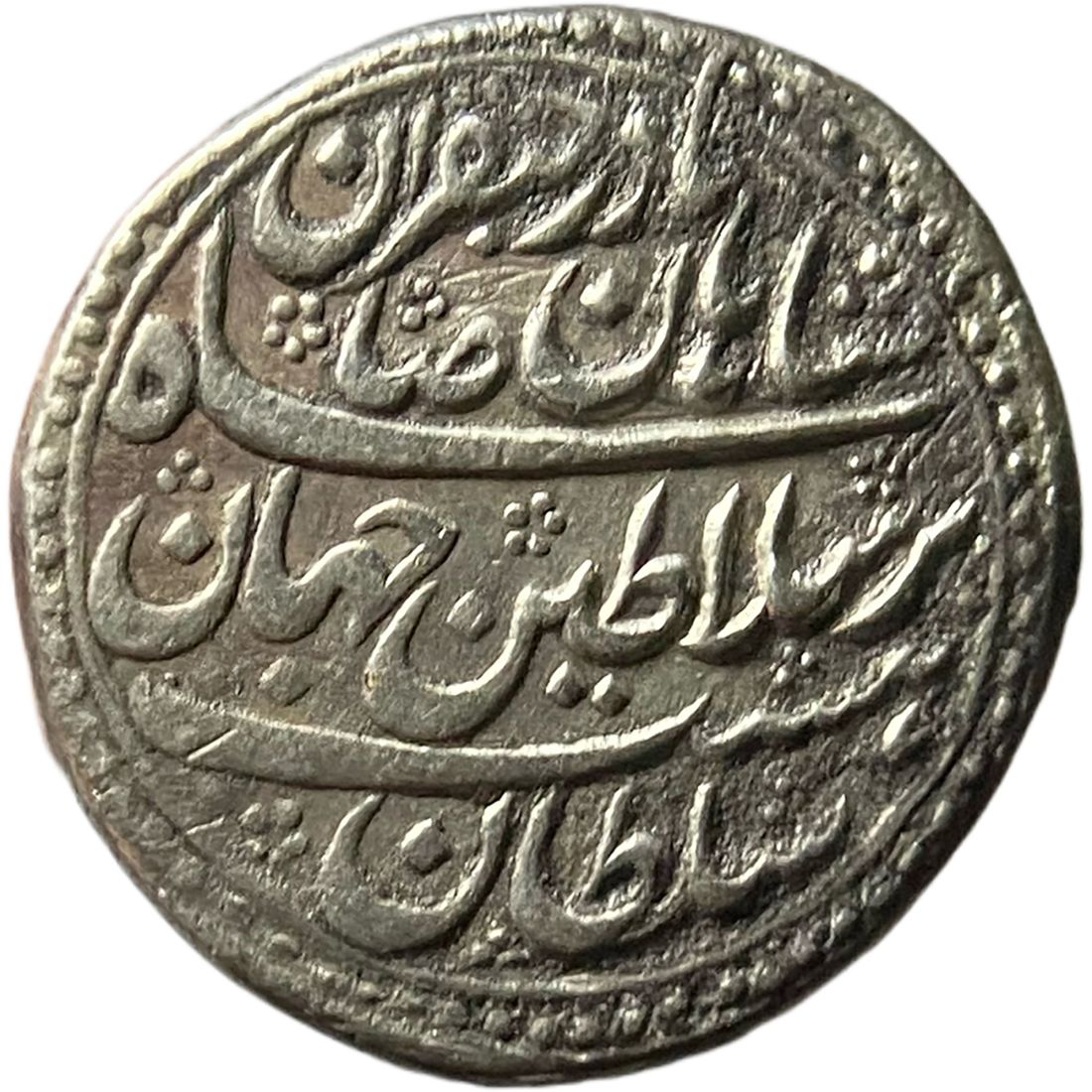This Lot is closed.
- P-Auction # 40
- Bids: 1
- Views:251
| Start Price 150000 | Estimated Price 150000-200000 |
| login, to view Hammer value | |
| Quick Description | ||||
|---|---|---|---|---|
| Denomination | Rupee | Mint | Lahore (Dar-UL-Sultanat) | |
| Metal | Silver | Year (AH/VS/SE/AM) | AH 1154 | |
| Full Description: Afsharid Dynasty, Nadir Shah (AH 1148-1160/1736-1747 AD), Lahore Dar-ul-Saltana, Silver Rupee, AH1152, 'Hasht Sultan' Couplet, Obv: Persian legend "hasht sultan bar salatin-e-jahan, shah-e-shahan Nadir saheb-e-qiran" (Is the Sultan among sultans of this World / Nadir, the King of kings, the Lord of Conjunctions), Rev: Persian legend "Sana 1152 Hijri", "zarb Lahore" with the epithet "Dar-ul-saltana" in the middle, at the top "khuld Allahu mulkahu", 11.28g, 24.90mm, (KM # 385A.5), about extremely fine, Exceedingly Rare. Note: The Shah of Iran, Nadir Shah, the founder of the Afsharid dynasty, took advantage of the weak leadership and instability following the death of Aurangzeb to invade India in February 1739. Having crossed the Khyber Pass, his forces were able to capture several areas in the western frontiers of the Mughal Empire, including Kabul, Ghazni, and Lahore. Punjab's Governor requested assistance from the Mughal Emperor, Muhammad Shah, but was denied. Muhammad Shah led the Mughal forces against Nadir Shah despite the reluctance of his commanders. Muhammad Shah surrendered in less than three hours after the Battle of Karnal on 13 February 1739. On 12 March 1739, Nadir Shah and Muhammad Shah entered Delhi in which Nadir Shah declared himself king and assumed control over the city and its treasures. There was no end to the terror unleashed by Nadir Shah in Delhi, as it soon spread to other cities of Hindustan, including Ahmadabad, Azimabad, Bhakkar, Lahore, Muhammadabad Banaras, Multan, Murshidabad, Peshawar, Qandahar, Sahrind, Sind, Tatta, Derajat, Najibabad, and Shahjahanabad (Delhi). To demonstrate the authority of their rulings, Islamic rulers often built mints in the cities they conquered and issued coins to symbolize their authority. Mughal authority was further weakened due to the invasion, which resulted in substantial wealth and treasure losses. A significant turning point in Indian history, which led to the rise of regional powers and ultimately to the downfall of the Mughal Empire, occurred as a result of this event. When Nadir Shah advanced upon Shahjahanabad in December 1738 (the ninth month of AH 1151) he occupied the capital of Punjab and returned to Lahore at the end of AH 1152, which began on April 10th, AD 1739. Coins from this period from the Lahore mint are exceptionally rare, with only four specimens known to exist. This mint's name is accompanied by its epithet, "Seat of the Sultanate." These coins serve as tangible artifacts of Nadir Shah's invasion and are highly sought after by collectors and historians alike. Offered for the first time in any auction! | ||||


